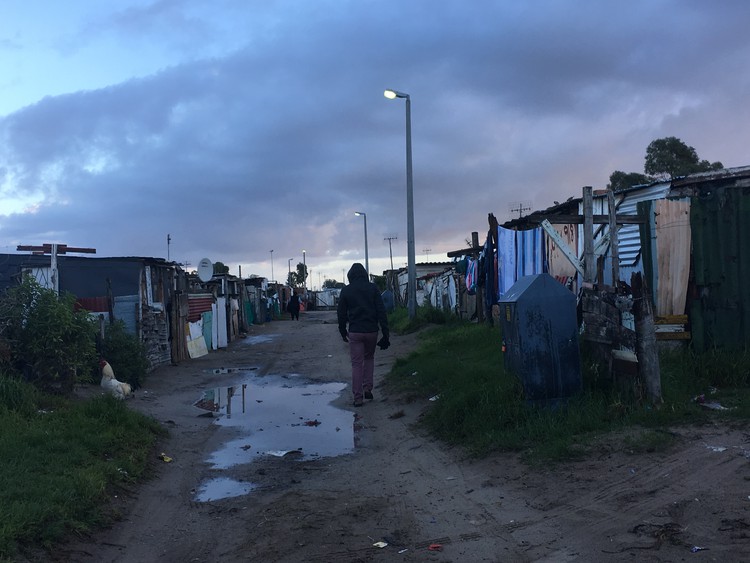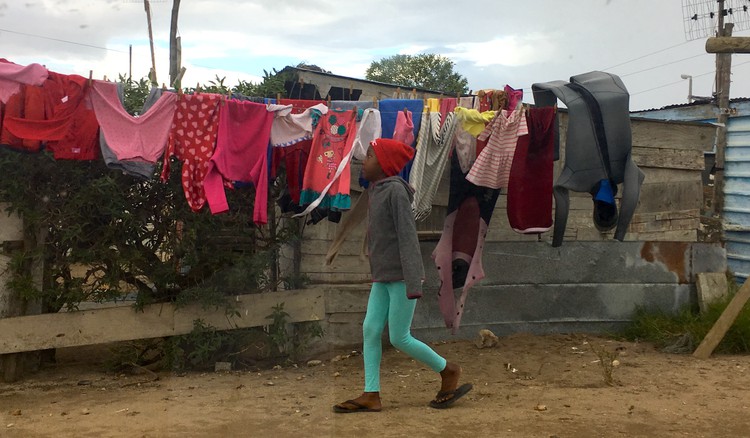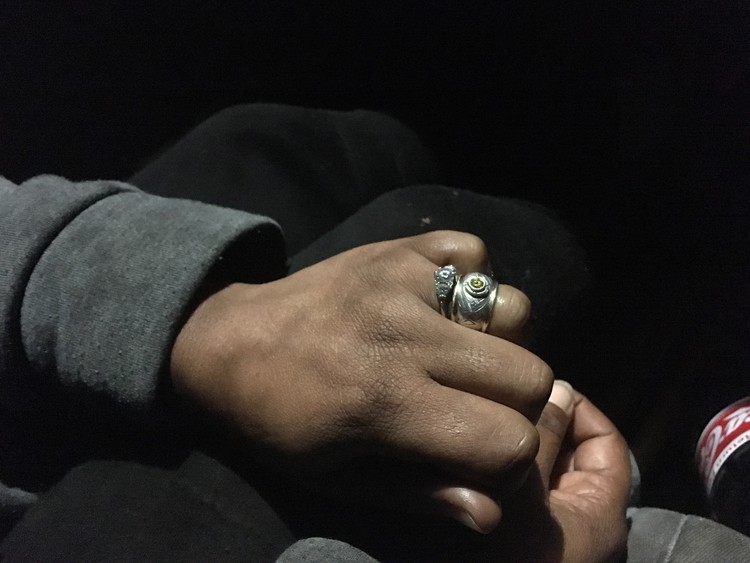Poacher killed in high-speed boat chase
Mortimer Booysen’s body washed up near Pearly Beach
At 4:30am Beredine Booysen was woken by the wife of another poacher. “Is your man at home?” the woman asked her. Booysen, 37, said no.
The last time she’d seen her husband, Mortimer, was at dusk the previous evening, Saturday 26 May, when one of his crew had picked him up for work. Known as Mortier (pronounced “Morty”), he was the skipper for an abalone poaching syndicate in Gansbaai, piloting their inflatable vessels, known as superducks, to drop and collect divers from reefs out at sea. Skinny and diminutive, with a gold stud in one front tooth, Mortier was known as one of the best skippers in the area. “He’s the only man that knows all the channels and dive spots,” his wife said.
In the ten years they’d been married she’d grown used to him returning late from the water. Most nights she left out dry clothes and a bowl of Weetbix for him. “Their work is cold and wet,” she explained. Now, though, as the other woman told her what had happened, she grew afraid. A patrol boat had chased the poachers and rammed their rubber duck. The other woman’s husband, a diver known as Chaka, had been cut by the propellers and taken to hospital. Mortier had disappeared.
Booysen quickly dressed in the old caravan she shared with her husband and five youngest children and drove, with her brother, to Pearly Beach, 25km east of Gansbaai. In the tiny township of Eluxolweni, home to dozens of poachers, they began knocking on doors and asking other men who’d been on board if they knew where Mortier was.
“They last saw him at 10pm,” she told me. “They said he was screaming, ‘Help, help,’ because that boat was coming for him. And when they called for Mortier afterwards it was quiet.”
The hunt for abalone has moved offshore in South Africa as stocks of the shellfish, an expensive delicacy in China, have declined due to poaching. The species once blanketed shallow reefs along South Africa’s western and southern shores, often packed edge to edge, but now survives only in scattered patches. Many remaining beds are only accessible by boat, giving rise to an arms race between poachers and the enforcement agencies who try catch them. In the last decade, both sides have acquired bigger and faster vessels. Dangerous high-speed chases have become common, usually after dark.
The fastest boats are fitted with twin 250 horsepower (hp) motors and reach speeds of 40 knots (74km/h). Skimming across the water, these vessels can violently overturn. When patrols arrive, sometimes riding superducks impounded from other poachers, the job of skippers like Mortier Booysen is to flee. The value of a single boat can exceed R1 million — by far the most expensive asset in a poaching operation.
“If there’s divers in the water they’ll just leave them — you can always get more divers,” says Marcel Kroese, former head of enforcement at the national fisheries authority. “They run into deep or shallow water, or do zig-zags, or head towards lights on shore so you can’t see them in the darkness. Sometimes they run straight at you to intimidate you.”
In pursuit, officials have in the past rammed poaching boats and shot out their engines. By law it is possible to justify such actions according to circumstance — whether the poachers disobeyed orders to stop, or posed a threat to the officials — but this does not allow officials to use force indiscriminately. If accidents happen, the agencies responsible are required to account for them, though at sea there are few witnesses besides poachers.
“It’s like a car chase, say a police vehicle chasing a hijacker,” Kroese says. “Do you drive them off the road? You make that decision in a moment, and if there are injuries you must file a report.”
A child walks past a row of wetsuits used for poaching. Abalone poaching is the main source of income for the residents of Masakhane.
By 10am word of the alleged crash had spread in Blompark, Gansbaai’s coloured fishing settlement, and via social media to fishing communities across the Western Cape. One voice note circulating on WhatsApp reported that a red patrol duck had ridden over a smaller boat and that the officials responsible had been taken into custody. “All dead, one man in hospital, still searching for the bodies,” an unidentified man said.
Someone in Hout Bay forwarded the message to me that Sunday evening. I headed to Gansbaai the next day. The fishing town lies at the far edge of Walker Bay, on a rocky peninsula curving into the Atlantic. Since the mid-1990s it has been notorious for abalone poaching, home to some of South Africa’s biggest syndicates. By the time I arrived, Mortier had been missing for more than 36 hours. A protest over the incident, brewing since the day before, had shut down the main road.
After asking for him in Pearly Beach that first morning, his wife, Booysen, had gone straight to Gansbaai police station to check if he’d been arrested, but the officers on duty “said they knew nothing,” she told me. All they’d heard was that a man had been taken to hospital with an injured hand. That was Chaka, the husband of her friend.
At about 11am, after “finding out by the poachers” that nobody had seen Mortier, she returned to the station and reported him missing.
By then, the patrol boat was attempting to return to shore with evidence from the bust. It belonged to the Department of Agriculture, Forestry and Fisheries (DAFF) and had launched from one of its compliance ships, the 47m-long Victoria Mxenge, the night before, an official later confirmed. At Kleinbaai harbour, the nearest slipway to Dyer Island, where the collision had taken place, a crowd of about twenty Blompark residents had gathered. “They were very angry,” an eyewitness said.
Instead of landing in Kleinbaai, the DAFF duck swung around Danger Point towards Gansbaai’s main harbour. A growing crowd followed them there — Booysen was among them — and officials locked the entrance to prevent them getting in. Protesters doused the road in petrol and lit a fire. A tow-truck driver threatened to ram the gates. When officials opened them, poachers from Blompark rushed in, threatening to set buildings alight. The Boathouse, a restaurant inside the harbour, was forced to close for the day.
Still, it was unclear to many people what had happened. A rumour spread that the DAFF ship had returned to Cape Town with three dead bodies on board. As many as five poachers were still thought to be at sea.
After the protest at the harbour, the police allowed a poaching crew to go out and search for the missing men. The NSRI had also launched a boat. Nobody was found, alive or dead.
I met Chaka, the injured diver, in Worcester hospital three days after what he said was a deliberate collision. His left arm was bandaged from the elbow down and he had deep cuts on both legs. The DAFF boat had approached in darkness and flicked on its lights, he said. “They chased us. I was in front with Mortier. They were behind us on the right and turned to slam us at the back.”
The poachers were flung off by the impact. In the water Chaka said he saw the DAFF boat heading directly towards them. “I lifted this arm to protect my head and the propellers cut me. I tried to go under and the propellers cut my legs.”
He surfaced once more, bleeding in the darkness. He heard Mortier cry out and fall silent. Three other divers from the boat found Chaka, and swam him nearly a kilometre to shore. “There was one on each side and one behind my head. I was floating on my back. They spoke to me the whole way. They told me not to stop talking, otherwise I would pass out.”
At the beach a bakkie fetched him. Someone had called an ambulance, and it met them on the road to Gansbaai. From Hermanus hospital he was transferred to Worcester, where on Tuesday he was awaiting further surgery. “Doctor says I might lose this finger,” he said. “I’ll never do that work again.”
In a statement on Tuesday 29 May, DAFF announced that it had confiscated a poaching vessel, more than 2,000 pieces of abalone and 33 diving cylinders after the chase. “The suspects reportedly jumped from the boat after which a search immediately ensued,” said spokesperson Carol Moses. “No arrests have been made.” The department did not respond to specific questions except to say that they were “not aware of any other incidents.”
There was no record of a collision with the South African Maritime Safety Authority (SAMSA) more than 48 hours after the bust. By law, collisions must be reported within 24 hours of returning to shore. The poaching vessel, a blue 8m superduck, allegedly belonged to one of Gansbaai’s biggest syndicates and was ridden ashore by DAFF officials. “If they rode right over the boat,” said Kroese, like some people had claimed after the event, “it would have been badly damaged. They would have had to tow it in.”
When I met Beredine Booysen, on Monday night, she was still waiting for her husband. “I think he was injured, otherwise he would have swum,” she told me. “He’s from Hawston. All those people swim well. But you can’t swim if you’re hurt.”
She was wearing Nike sneakers and a jacket with imitation fur lining. On her wedding finger were two diamond-studded rings. The bigger one had been a gift from Mortier on their 10th wedding anniversary, in July last year, she said. This year, on Mother’s Day, he’d bought her a double bed, a kitchen unit and “a beautiful wardrobe.” These were in the Wendy house where her two oldest sons slept. When I visited there was a dead bunch of flowers on a shelf beside the doorway, still wrapped in green cellophane. In the caravan across the yard was a smaller double bed and a bunk, the laptop Mortier used to play games on, a flat-screen with DSTV. “Lucky there’s a lot of channels,” Booysen said. “I’ll find something to watch tonight.”
Beredine Booysen’s husband Mortimer was the family’s breadwinner.
Some anglers found her husband’s body washed up near Pearly Beach the next afternoon, on Tuesday 29 May. Mortier Booysen had a deep cut on his forehead and was still wearing his Reef wetsuit. A photo of the body quickly spread, like the voice note had, from cellphone to cellphone along the coast.
“I don’t know what I feel,” his wife had told me on Monday night. “But if Mortier’s dead then I will feel it. My smallest child is three. Mortier went to sea for us. If he’s gone, I don’t know who’ll put bread on the table.”
On Tuesday morning, a few hours before the body was found, dozens of young men stood outside their shacks in Masakhane, a black township near Blompark, waiting for lifts to the sea. Some were already in their wetsuits, holding dive masks and flippers. A cold front had struck, bringing swell and heavy rain. Conditions were still good enough for diving from shore, though the prospect of decent harvests, from heavily depleted reefs, was almost nonexistent. One by one the bakkies drew up, their loadbeds bent from overuse. The divers leapt up, ten or more at a time, and headed, in daylight, to hunt for abalone.
CORRECTION: An inaccuracy in the paragraph starting “Instead of landing in Kleinbaai …” was corrected after publication.
Support independent journalism
Donate using Payfast

Don't miss out on the latest news
We respect your privacy, and promise we won't spam you.
Letters
Dear Editor
It is sad that in the 21st century those who are poor still suffer the consequences of state power. it is in the interest of the state to play a deadly game of cat and mouse as it provides the ultimate cover for them not to develop the people in the area through skills and other upliftment projects. It gives the government the alibi of protecting resources while doing nothing to develop areas such as Pearly Beach. The only time these people are important is election time. The fact that somebody died is not an accident but the outcome of a vicious and malicious policy deliberately set to target the impoverished.
© 2018 GroundUp.
This article is licensed under a Creative Commons Attribution-NoDerivatives 4.0 International License.
You may republish this article, so long as you credit the authors and GroundUp, and do not change the text. Please include a link back to the original article.



